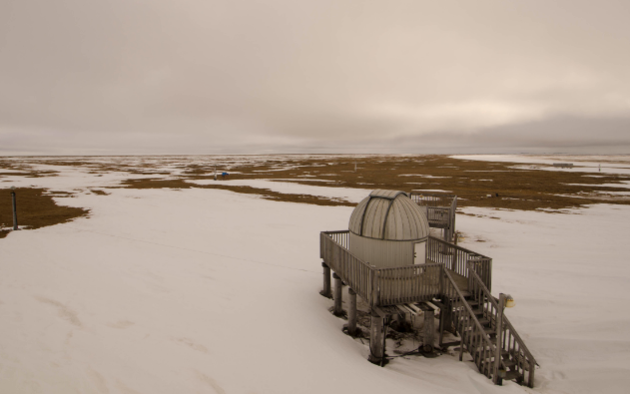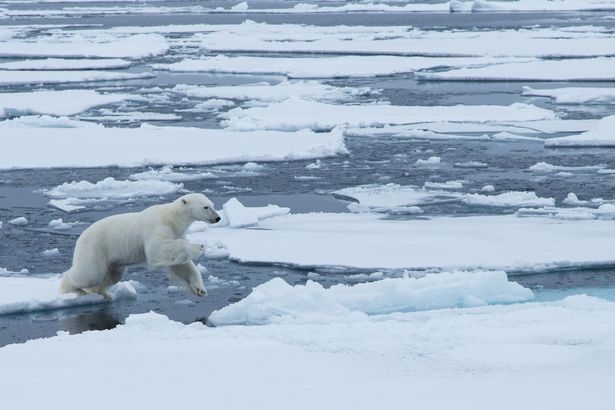by Steve Selden | Jun 24, 2016 | Videos
Early September, high up on the Arctic’s North Slope, there is a feast truly hard to imagine! Around 80 polar bears gather each year along the rocky, frozen shores of Barter Island, just off the village of Kaktovik, where hunter-harvested bowhead whale remains await the hungry bruins. Since polar bears are generally known as solitary predators, this unique occurrence has peaked the interest of biologists in the north.
A small Inupiat hunting community, Kaktovik seemingly rests on the edge of the world, No roads or train tracks reach this northern outpost and packed sea – ice for nine months of the year isolates the town from most of the world. However, September beckons throngs of scientists and wildlife photographers to the speck of a town to document the incredibly voracious and unusual behavior. With more polar bears turning up year after year, biologists and climate researchers are working to solve the mystery of why this continues to draw a massive congregation of polar bears. Unlocking the clues of this migration is becoming paramount. The South Beaufort Sea polar bear population more and more is choosing to forage on land rather than the traditional sea – ice environment.
Inhabitants of Kaktovik, much like those of Churchill, Manitoba, become intertwined in their lives with the animals once the feast is over. The bears then meander towards town to see what else they can find. Perhaps dessert.
Todd Atwood is the lead polar bear scientist for the U.S. Geological Survey. Through his studies and research in the Arctic, he has estimated that polar bear numbers have declined 40% in the South Beaufort Sea area since 2006. Atwood is on a mission to find out the reason for the drastic decline.
by Steve Selden | May 24, 2016 | Conservation
Barrow Observatory, an Arctic Circle research station run by The National Oceanic and Atmospheric Administration, is normally a very cold place with snow lasting well into the summer months. This year is different according to researchers as snow has begun to melt a good month prior to the normal thaw time. It appears the dynamic Arctic summer is starting earlier in the far north.

Barrow Observatory run by NOAA in the Arctic Circle. NOAA photo.
The observatory, 320 miles north of the Arctic Circle, is seeing the earliest snow melt in nearly 80 years. David Douglas, a U. S. Geological Survey research biologist stated the area looks like “June or early July right now.” May 13 marked the beginning of the snow melting this year.
The snow melt at Barrow Observatory follows one of the warmest Alaska winters on record. Temperatures were over 11 degrees above average according to NOAA. Douglas emphasizes the melting shows how the Arctic’s ice coverage has become quite fragile and forecasts record low sea ice for in the Arctic for 2016.
“Polar bears are having to make their decisions about how to move and where to go on thinner ice pack that’s mostly first-year ice,” Douglas said.

A polar bear searching for sufficient seal – hunting ice in the Arctic. Kyriaksos Kaziras photo.
These ominous forecasts have been surfacing for years and now we are seeing harbingers of these prophesies in physical evidence all over the world and especially in the high Arctic.
by Steve Selden | Sep 8, 2015 | Conservation
Biologists from the U. S. Fish and Wildlife Service and U. S. Geological Survey teamed with Local residents from Kaktovik, a remote island in the Beaufort Sea, to rescue a polar bear ensnared in a lost fishing net. The 1,000 pound male polar bear was spotted in the sea struggling due to the netting wrapped around his body. Biologists flew close to the bear and shot him with a tranquilizer dart. Local fishermen, nearby in their boats, rushed in to buoy the bear to prevent him from drowning while sedated.

A polar bear that was trapped in a fishing net rests on shore after being freed. U S geological Survey photo.
Biologists worked feverishly to untangle the bear and he was released back into the wild after they deemed him injury free.
USGS asserts that climate change continues to affect polar bear habitats and they have established a Polar Bear Recovery Team to protect them. While individual rescues such as this aide in saving small numbers of polar bears, each one, especially females, can be crucial to the populations overall strength. close contact with sedated bears can also reveal scientific information to help evaluate the species.

Polar bear resting after sedation and removal of fishing net. U. S. geological Survey photo.





